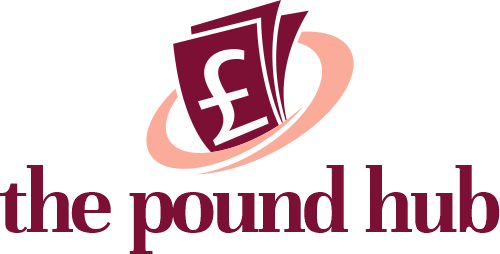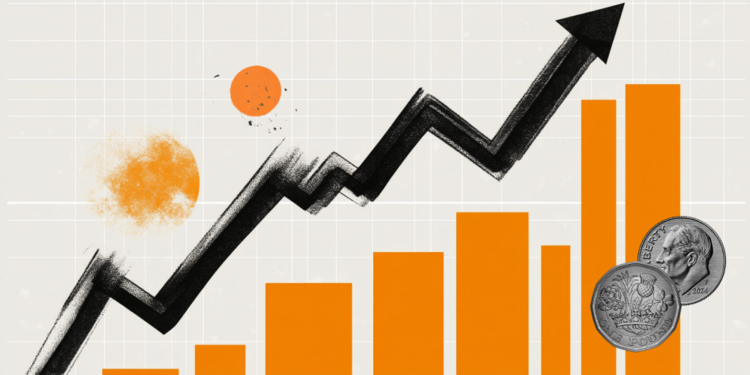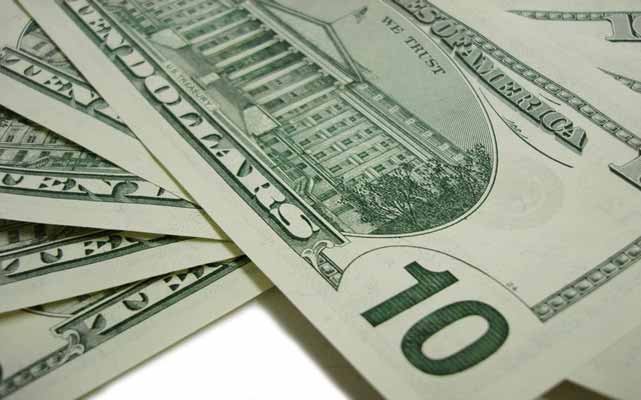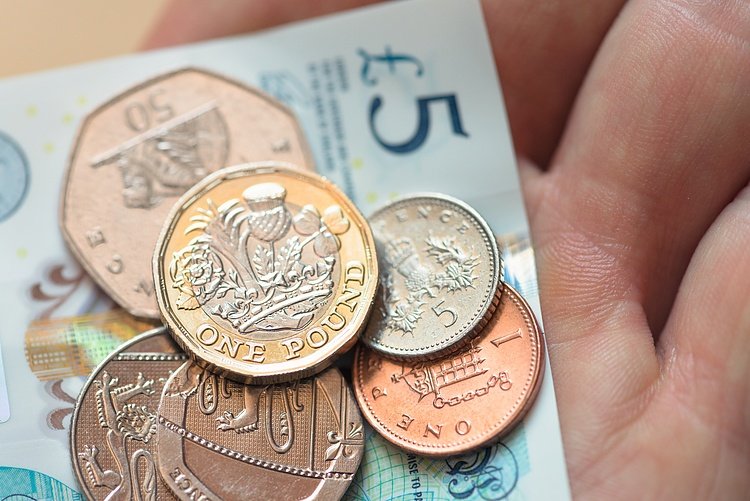- GBP/USD rallied to its highest level since October 2021 above 1.3750.
- Shell denied reports suggesting that they were in talks to acquire BP.
- The US Dollar (USD) remains under pressure as Fed independence comes into question.
GBP/USD extended its rally and touched its highest level since October 2021 above 1.3750 on Thursday. The heavy selling pressure surrounding the US Dollar (USD), on renewed concerns over the Federal Reserve losing its independence, could allow the pair to continue to push higher despite overbought conditions.
The Wall Street Journal (WSJ) reported late Wednesday that United States President Donald Trump was planning to announce his candidate for the next Chairman of the Federal Reserve (Fed) early, by September or October, to undermine Fed Chairman Jerome Powell. The news outlet claimed that Trump is evaluating Kevin Hassett’s, Director of the National Economic Council, and Treasury Secretary Scott Bessent’s commitment to lower interest rates as they are among the names that could potentially replace Powell.
UK bans Shell from making a bid for BP for six months
The WSJ said on Wednesday that Shell was in talks to acquire BP plc. Shell denied this claim early Thursday, noting that it was not actively considering such a takeover. According to UK regulations, Shell is now banned from making a bid for BP for the next six months after officially releasing that statement.
The UK’s FTSE 100 Index is up 0.3% following this development, and BP shares gain nearly 0.7% on the day.
In the second half of the day, May Durable Goods Orders and weekly Initial Jobless Claims data from the US will be watched closely by market participants. Even if these data come in better than expected, their positive impact on the USD is likely to remain short-lived.
GBP/USD Technical Analysis
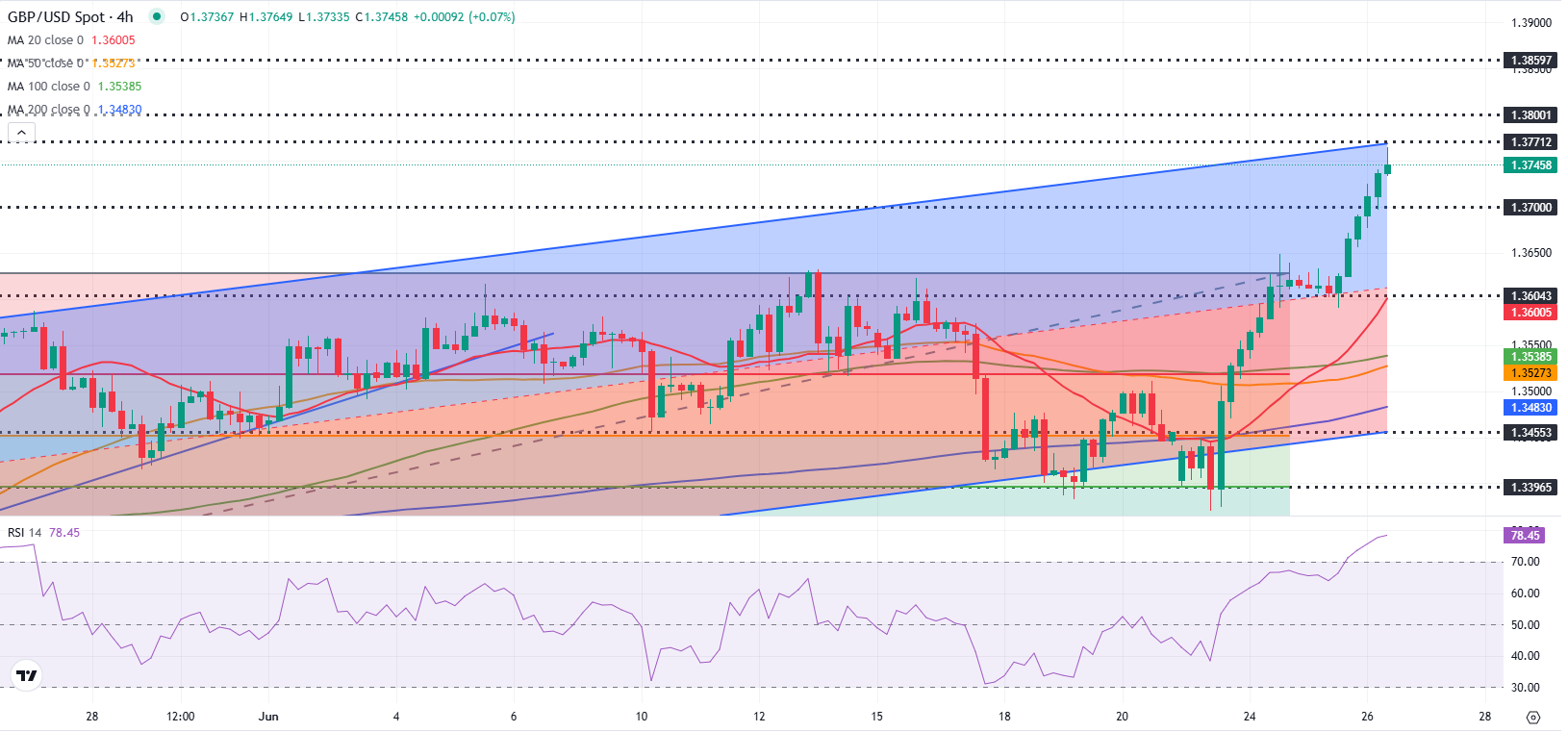
The Relative Strength Index (RSI) indicator on the 4-hour chart rises toward 80, reflecting overbought conditions for GBP/USD. On the upside, 1.3770 (upper limit of the ascending channel) aligns as the next resistance level before 1.3800 (round level, static level) and 1.3860 (static level).
Looking south, supports could be seen at 1.3700 (round level, static level), 1.3650 (static level, former resistance) and 1.3620 (mid-point of the ascending channel).
Pound Sterling FAQs
The Pound Sterling (GBP) is the oldest currency in the world (886 AD) and the official currency of the United Kingdom. It is the fourth most traded unit for foreign exchange (FX) in the world, accounting for 12% of all transactions, averaging $630 billion a day, according to 2022 data.
Its key trading pairs are GBP/USD, also known as ‘Cable’, which accounts for 11% of FX, GBP/JPY, or the ‘Dragon’ as it is known by traders (3%), and EUR/GBP (2%). The Pound Sterling is issued by the Bank of England (BoE).
The single most important factor influencing the value of the Pound Sterling is monetary policy decided by the Bank of England. The BoE bases its decisions on whether it has achieved its primary goal of “price stability” – a steady inflation rate of around 2%. Its primary tool for achieving this is the adjustment of interest rates.
When inflation is too high, the BoE will try to rein it in by raising interest rates, making it more expensive for people and businesses to access credit. This is generally positive for GBP, as higher interest rates make the UK a more attractive place for global investors to park their money.
When inflation falls too low it is a sign economic growth is slowing. In this scenario, the BoE will consider lowering interest rates to cheapen credit so businesses will borrow more to invest in growth-generating projects.
Data releases gauge the health of the economy and can impact the value of the Pound Sterling. Indicators such as GDP, Manufacturing and Services PMIs, and employment can all influence the direction of the GBP.
A strong economy is good for Sterling. Not only does it attract more foreign investment but it may encourage the BoE to put up interest rates, which will directly strengthen GBP. Otherwise, if economic data is weak, the Pound Sterling is likely to fall.
Another significant data release for the Pound Sterling is the Trade Balance. This indicator measures the difference between what a country earns from its exports and what it spends on imports over a given period.
If a country produces highly sought-after exports, its currency will benefit purely from the extra demand created from foreign buyers seeking to purchase these goods. Therefore, a positive net Trade Balance strengthens a currency and vice versa for a negative balance.
